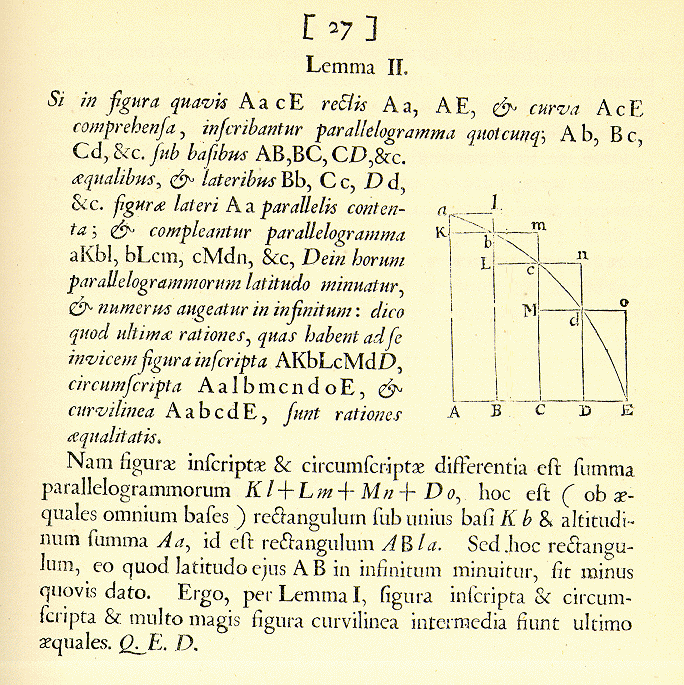
Translation If in an arbitrary figure AacE bounded by
the lines Aa, AE and the curve AcE,are inscribed a number of
rectangles; Ab, Bc, Cd, etc. on equal bases AB, BC, CD, etc.,
and with sides Bb, Cc, Dd, etc. parallel to the side Aa of the
figure; let us construct the parallelograms aKBl, bLcm, cMdn, etc.
Then let the width of these parallelograms be diminished, and
their number increased to infinity: I say that the ultimate ratios
which exist between the inscribed figure AKbLcMdD, the
circumscribed AalbmcndoE and the curvilinear AabcdE are ratios of
equality.
In fact the difference between the inscribed and circumscribed
figures is the sum of the parallelograms Kl + Lm + Mn + Do,
which is (since their bases are all equal) the rectangle on a single
base Kb and with height the sum Aa, i.e. the rectangle
ABla. But this rectangle, since its width AB is
being diminished infinitely, will become smaller than any given
quantity. Thus, by Lemma I, the inscribed and circumscribed figures,
and certainly all the more the intermediate curvilinear figure, are
ultimately equal. Q.E.D.